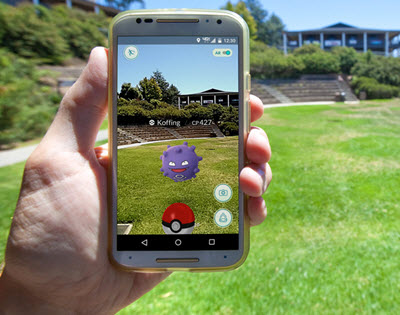Understanding the differences between virtual reality, augmented reality and mixed reality
 Loudon Blair is Senior Director in Ciena's Corporate Strategy Office. This article was originally published in Network World.
Loudon Blair is Senior Director in Ciena's Corporate Strategy Office. This article was originally published in Network World.
Virtual reality is hot, and enterprise- and consumer-facing organizations are eager to figure out how they can take advantage of the new medium, whether it be for entertainment, productivity, sales, or a myriad of other potential uses.
However, sometimes lost in all this excitement is the difference between virtual reality platforms and whether the required technical underpinnings are in place to deliver a satisfying user experience. It’s important to understand what virtual reality, augmented reality, and mixed reality are in relation to each other, as well as the technical considerations that those hoping to create experiences for these platforms need to keep in mind.
Virtual Reality defined
Virtual reality, or VR, is often used as a blanket term for all digital-reality variations. But in practice, it’s a specific kind of experience. While AR and MR incorporate some aspect of the real environment around the user, VR refers to a 100% virtual, simulated experience. VR headsets cover the user’s field of vision and respond to eye and head movements and shift what the screen displays accordingly, thus creating the illusion that the viewer is actually inside the other location or world.
Virtual reality is exceptionally sensitive to lag and slowdown—delays between when an input is placed and when the system reacts to it, and noticeable disruptions in the consistent stream of data being delivered, respectively. A significant portion of its value proposition includes the experience of actually being transported somewhere, and thus a frozen screen or patch of pixelated haze smashes that illusion quickly, ruining the experience for many—and in some cases causing motion sickness.
When an event is broadcast in VR—a concert, sporting event, or ceremony, for example—camera rigs that capture 360-degree (or 180-degree depending on the event) panoramic views are needed to provide the viewer with the ability to look at every angle. This requires a number of lenses and thus multiple video streams moving side-by-side. To transmit this information, copious amounts of bandwidth are required—up to 4 to 5 times as much for 360-degree video compared to regular video, according to YouTube’s Anjali Wheeler.
Further complicating bandwidth requirements is whether or not the content being streamed to the VR device is “live,” in real-time. If so, the bandwidth requirements are significantly higher.
Live VR can take two forms: Live as in watching an event as it occurs; and “live” involving interaction with others within a virtual environment. The former is like watching an extremely immersive movie, and the unit is passively accepting the data stream from the network, which requires low latency and a high bandwidth connection to achieve high video throughput. With the latter, to enable interaction between the VR source and multiple users, also requires latency to be so low that it does not cause a noticeable delay, even as data is moved back and forth between the individual VR units connected and servers.
Augmented Reality blurs the line between real and digital
The crucial difference between VR and AR lies in the way digital content is mixed with reality. Augmented reality (AR) doesn’t block out the world around the user in favor of a new, fabricated one; rather, it places a digital layer between the viewer and reality.
AR units are at least semi-transparent, allowing the user to see the world around them even as web pages, graphs, maps, and more are displayed in front of them (think Google Glass). This kind of technology also allows engineers and designers to see and manipulate models of what they’re working on alongside or overlaid onto their current work. Similarly, a surgeon could use an AR visor to highlight specific anatomy, pull up a model of an organ for reference, or help train other surgeons.
 AR can also work through mobile phones using the integrated camera, and is the kind of virtual reality that powers Pokémon Go, the mobile app that surpassed Twitter in active daily users a week after its release. With Go, players wander around in their cities and towns and try to catch creatures that appear on top of the real world through their phone’s cameras. The game’s massive adoption shows the average consumer’s appetite for AR technologies.
AR can also work through mobile phones using the integrated camera, and is the kind of virtual reality that powers Pokémon Go, the mobile app that surpassed Twitter in active daily users a week after its release. With Go, players wander around in their cities and towns and try to catch creatures that appear on top of the real world through their phone’s cameras. The game’s massive adoption shows the average consumer’s appetite for AR technologies.
Augmented reality is the most versatile of the “VR” technologies today. Unlike VR systems that require users to remain tethered to a stationary unity, AR is typically delivered through a visor or portable screen that allows for mobile use.
The challenge is that the computational ability of a unit small and light enough to comfortably be supported by a human head is considerably small, and as such, services and content that work with AR units, for now, need to be low-bandwidth and require minimal computing power and minimal battery consumption.
If AR is to enter the mainstream and live up to the technology’s potential, there needs to be a way to deliver content to the devices with high bandwidth and low latency while allowing compute to happen outside the unit. According to GSMA Intelligence, generic AR applications will require upwards of 100Mbps bandwidth throughput and nearly as low as 1ms delay—difficult specs for a device you can walk around with.
By offloading compute functions from the portable device to shared data center resources, power consumption of the device can be reduced, and sharing of the compute environment across many users can be maximized. Again, the challenge here is latency, as it must be low enough so as to maintain the experience.
Mixed Reality: blending VR and AR into an interactive world
Mixed reality—MR—is a combination of both virtual and augmented reality. Whereas in AR, digital content is simply overlaid onto the real environment being viewed—typically informational content such as a timetable when looking at a train—with MR platforms, the digital world is integrated into the real world in an interactive way. MR use cases are diverse, and reach the everyday consumer. For example, a homeowner could sample new furniture or paint colors as they would appear in their living room, without having to move the existing sofa.
As a combination of both AR and VR, mixed reality needs to be built upon technology capable of both: high bandwidth, low latency, and able to allow the user to explore a digital 360-degree space while the headset reacts to the environment around it. We’re very early in the development of MR technologies, so it’s too soon to say with accuracy what the required network resources will be for these devices, but we know they’ll be significant, and will require an even more robust and flexible network than both VR and AR.
Luckily, we have a little time to figure this out—though there are a number of people anticipating MR to be huge, so we had better sort it out before too long. The MR startup Magic Leap has, despite only showing its technology to a few individuals (and never publicly), raised $1.4 billion in funding, and Microsoft has been developing its own MR platform, HoloLens, for some time now, and has even begun shipping development kits.
Building toward adoption
The key to unlocking the potential of these platforms lies in making sure massive amounts of data can be transferred without being slowed down or limiting the experience. In short, this means we need to look to 5G and the infrastructure to support it, as well as improved wireline access.
Bringing the bandwidth to the user from a wireless perspective will be important. Off-loading compute functions from the device to the cloud will free up significant bulk in the lens or headset. Importantly, there must also be an access infrastructure in place to enable low latency connections to the servers supporting VR platforms. Wi-Fi will allow users to be untethered inside the building, while the bandwidth and latency specifications being driven for 5G will help enable untethered access outside the building.
In addition to wireless, going the wireline route offers the potential to take advantage of fiber technologies to push bandwidth from hundreds of Megabits-per-second into Gigabits, whether into a home or enterprise. Real time, ultra-high definition content with high QoE for multiple users is going to need to require that level of access bandwidth.
There are so many exciting, aspirational VR stories about all the things we can do with the many permutations of this technology, in the enterprise, healthcare, education, and more. The use cases are worth working toward, but we haven’t yet focused enough on the network infrastructure to make them a reality. We need to get to the point in which these capabilities become seamless, and we’re not there just yet.








